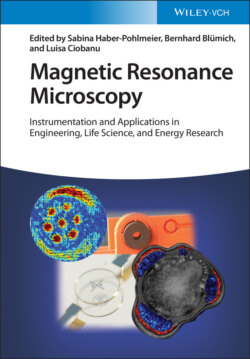Читать книгу Magnetic Resonance Microscopy - Группа авторов - Страница 56
3.4.3 Assessing Pediatric Hydrocephalus in the Developing World
ОглавлениеA low-cost and readily accessible POC MRI could be invaluable to guide and assess surgical treatment of pediatric hydrocephalus. In hydrocephalus, the brain’s ventricular system is blocked, which in turn causes swelling of the head to an abnormal size and increased cranial pressure. In Africa this is usually caused by a bacterial infection during the early months of life [64]. Untreated hydrocephalus can hamper brain development and incur a significant disease burden, including brain damage, blindness, and death [65]. Treatments include introducing a shunt to reestablish the cerebrospinal fluid (CSF) flow; however, this must be monitored and possibly replaced if clogged. More minimally invasive shuntless approaches [66] are becoming increasingly common in Africa, where follow-up assessment is difficult.
Imaging of the brain’s ventricular system is needed at all stages, from diagnosis to surgical follow-ups. Fortunately, the ventricular system is a large structure that dominates routine T1- or T2-weighted MR images and is perhaps one of the easiest intracranial structures to image with MRI and does not require high spatial resolution or sensitivity. It is also well depicted on CT, but the focus on a pediatric population and the need for repeated follow-up imaging creates a concern about the effects of CT’s ionizing radiation. This places MRI as the first choice for assessing and following this disorder. The combination of disease severity and prevalence, the available treatment, the limited spatial resolution needed, and remote distribution of the patients makes low-cost, portable MRI an ideal tool for pediatric hydrocephalus assessment [67–69]. Figure 3.4 shows a low-cost 50-mT permanent magnet-based system under development for this purpose [68,70].
Figure 3.4 A low-cost, lightweight scanner under development for pediatric hydrocephalus monitoring. The system uses a rare-earth permanent magnet “Halbach” arrangement producing a 50-mT transverse field. Magnet bore is 27 cm diameter × 50 cm length.
